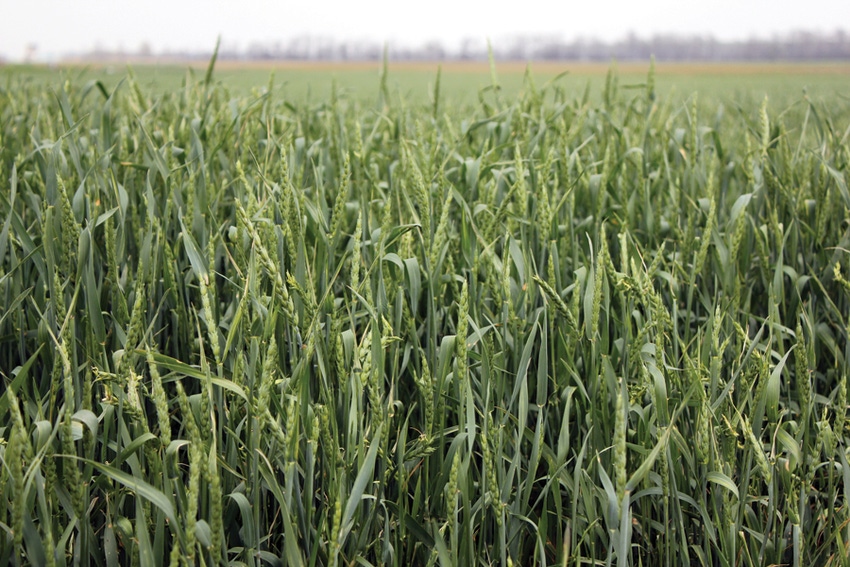January 18, 2012

I recommend that ryegrass control programs for wheat begin in the fall, but sometimes it just doesn’t happen that way. A few herbicides will still control larger ryegrass in the spring if done right.
My graduate student and program technician, Jim Dickson, has recently conducted a survey of over 300 ryegrass populations from across Arkansas. Over 80 percent of our ryegrass populations are resistant to the herbicide Hoelon. It is just not an option for us anymore. Jim’s program also found resistance to ALS inhibitors like PowerFlex and Osprey and to glyphosate, and some resistance to Axial XL. In fact, at least three populations were cross-resistant to three modes of action.
With this in mind, choosing a product to use really boils down to a couple of questions. (1) Do I have resistance? and (2) What other weeds are present?
If you have resistance to the ALS herbicides PowerFlex and Osprey and you only have ryegrass, your only choice is Axial XL. Axial only controls ryegrass; it has no broadleaf activity. You can tank-mix some broadleaf herbicides with Axial, but I would stay away from 2,4-D. I have effectively controlled tillering ryegrass in the spring with Axial. I get the best results when temperatures are above 55 degrees for at least three days before and after an application.
To my knowledge there are no fertilizer restrictions for Axial. Axial has become our go-to product for resistant fields; however, it should be pointed out that several populations in our survey were resistant. We cannot rely on Axial XL alone in the spring for long.
If you do not have ALS-resistance, then Osprey and PowerFlex work well on larger ryegrass. They both also control a fairly large spectrum of broadleaf weeds (consult the label or check the MP44 at the www.uaex.eduwheat section for weeds controlled ratings).
You can tank-mix broadleaf herbicides with Osprey and PowerFlex, but I would stay away from Sencor and 2,4-D. Both products require a good adjuvant program. For best results, read and follow the label carefully.
In addition, ryegrass needs to be greened up and actively growing, this means warm weather. At least 65 degrees for three days before and after would be ideal. Check the label for specific restrictions on fertilizers. Use full label rates.
Just because I have stepped out and given you some temperatures does not mean these wheat herbicides won’t work at all below the temperatures I have given. They are just guidelines; the closer or warmer it is, the better they work in general.
Earlier, I mentioned that I prefer ryegrass control programs to begin in the fall. One big reason for this is weed competition. If you have ryegrass in your wheat in March, then you have had probably five to six months of weed competition, which will result in lower yields.
Also, with all the resistance we have discovered in our ryegrass populations, it is my recommendation to go with at least two different modes of action against ryegrass. For example, you could use Finesse or Finesse G&B in the fall followed by Axial in the spring. You could also go total post and use Osprey or Finesse + Prowl H2O in the fall followed by Axial in the spring. This program would give you three modes of action against ryegrass.
If you have ryegrass up in the fall prior to planting, consider using Gramoxone or tillage as your burn-down instead of glyphosate. This will help manage our glyphosate resistance problem as well.
In Arkansas, the Cooperative Extension Service offers a ryegrass screening program to help determine the best herbicide choice for your wheat ground. Mature seed samples should be taken in the summer at harvest time.
You May Also Like




